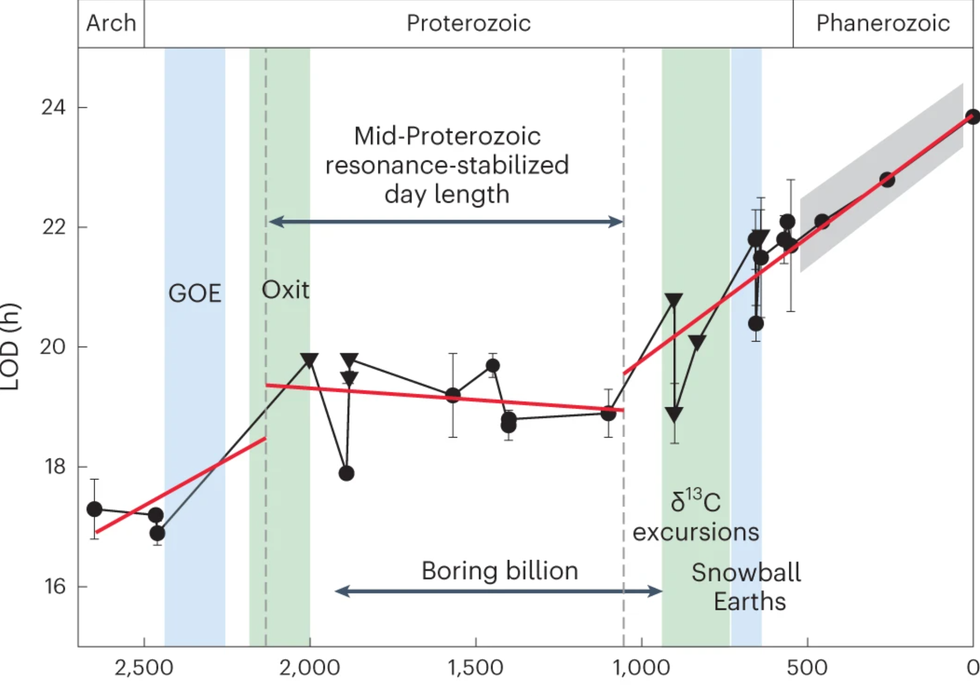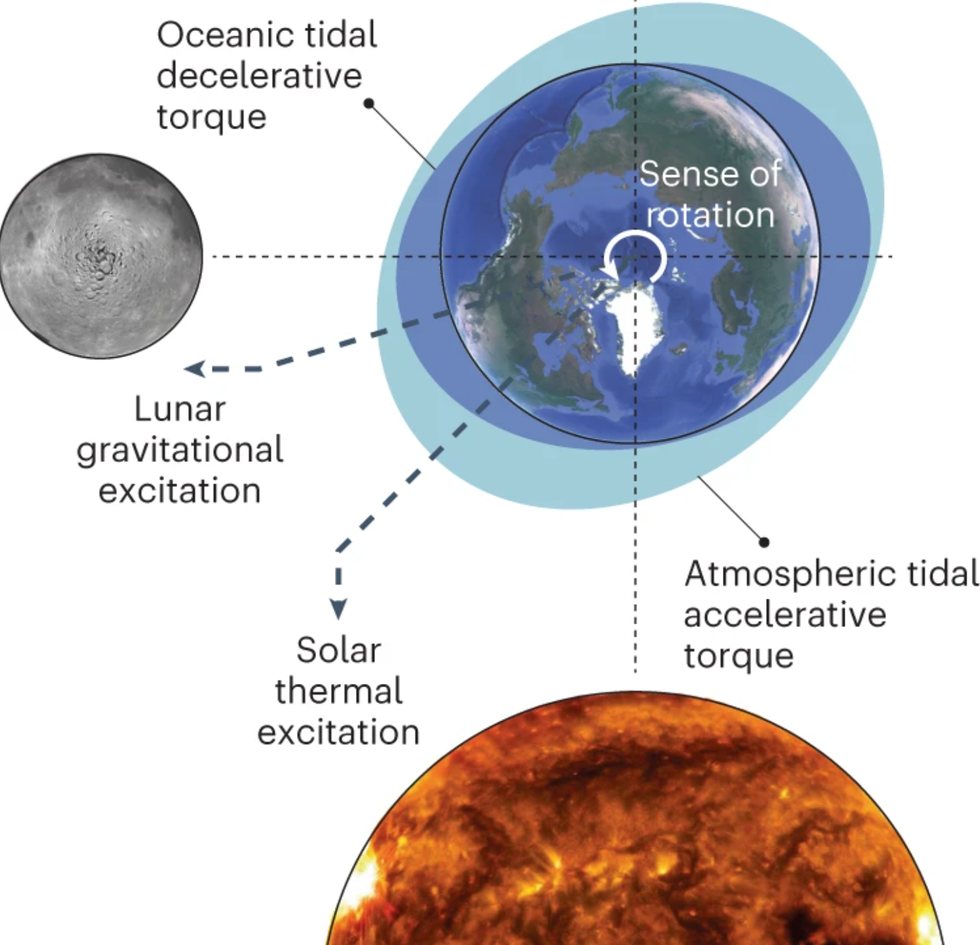Key Takeaways:
- Earth’s rotation has undergone significant changes over geological time, with days once lasting as little as 18 hours and 41 minutes during the distant past.
- The Moon’s proximity to Earth in its early stages greatly influenced our planet’s rotation speed, leading to shorter days.
- Research suggests that approximately one to two billion years ago, Earth experienced a prolonged period of stable day length, defying expectations of continuous increase due to lunar movements.
- Fluctuations in Earth’s atmosphere during this period played a crucial role in offsetting changes in day length caused by lunar gravitational forces, leading to a temporary pause in Earth’s temporal evolution.
- The implications of this pause extend to the development of life on Earth, potentially delaying the rise of more complex organisms due to the prolonged photosynthetic processes of early bacteria.
In contemporary times, our planet revolves in a cycle of 24 hours, providing us with the rhythm of day and night. However, when considering the vastness of geological time, this cycle is a recent development. During the Mesozoic Era, spanning from 252 to 66 million years ago, the Earth completed a rotation every 23 hours. If we journey back even further, approximately 1.4 billion years ago, a day lasted a mere 18 hours and 41 minutes, painting a picture of a vastly different temporal landscape.
The Earth’s rotation is profoundly influenced by its solitary natural satellite, the Moon. Originating during the tumultuous era known as the Hadean Eon, the Moon formed amidst the chaos of celestial collisions, likely emerging from the remnants of a primordial clash with a celestial body dubbed Theia. In its nascent stages, the Moon orbited a mere 14,000 miles from Earth, a proximity nearly seventeen times closer than its present position. This close proximity exerted a significant effect on Earth’s rotation, causing it to spin more swiftly.
However, over eons, the Moon has gradually distanced itself from its celestial companion. One might surmise that this gradual departure would inevitably result in lengthening Earth days. Alas, the reality is far from straightforward.

For years, certain scholars have postulated that during a specific epoch, approximately one to two billion years ago, Earth’s daily rhythm remained relatively stable, hovering around 19 hours. This epoch, nestled within the Proterozoic era, has earned the moniker of the “boring billion” among scientific circles due to its perceived lack of significant events.
Recent research conducted by scientists from the Chinese Academy of Sciences and Australia’s Curtin University sheds light on this enigmatic pause in Earth’s temporal evolution. Through meticulous data collection and sophisticated statistical analyses, utilizing techniques such as cyclostratigraphy—a method leveraging sediment patterns to discern climatic cycles influenced by astronomical phenomena—these researchers unveiled a compelling explanation. They posit that fluctuations in Earth’s atmosphere during this period generated counteracting forces, effectively neutralizing any alterations in day length induced by lunar gravitational forces.
Uwe Kirscher, co-author from Curtin University, elucidated, “If these opposing forces had reached equilibrium in the past, a tidal resonance would have ensued, resulting in a prolonged period of unchanged day length.” This stasis coincides with the Great Oxidation Event, marked by a temporary surge in oxygen levels and the formation of an ozone layer, followed by subsequent decline. This atmospheric shift likely intensified the impact of solar atmospheric tides, countering the Moon’s gravitational influence.

This interlude in Earth’s temporal progression may have ramifications for the development of life on our planet. The elongated days could have impeded the photosynthetic processes of early bacteria, delaying the accumulation of oxygen necessary to support more complex life forms.
Presently, Earth’s temporal journey is back in motion, albeit at an infinitesimal pace. Scientists estimate that each year, the length of a day extends by a mere 0.000015 seconds—a minute adjustment with profound implications. Since the collapse of the Bronze Age circa 1,200 BCE, Earth’s rotation has gained a mere 0.047 seconds, highlighting the glacial pace of this celestial dance.
Rest assured, there’s no need to recalibrate your timepieces just yet.


